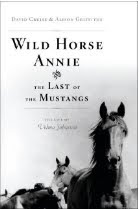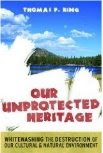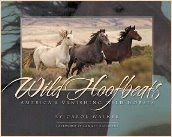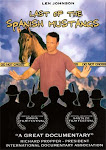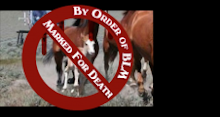The Bureau of Land Management will be hold a public hearing regarding the use of motorized vehicle and/or aircraft in the management of Nevada's wild horses and burros on Wednesday, May 20, 2009.
The hearing will covene at 10:00 a.m. in the Great Basin A and B conference rooms of the Nevada State Office, 1340 Financial Boulevard in Reno, Nevada. The hearing is being held in accordance with Public Law 92-195, as amended by Public Law 94-579 and Public Law 95-514, as well as 43 Code of Federal Regulations Part 4700.
BLM Nevada proposes to use fixed wing aircraft for population surveys, helicopters for population surveys or capture, or other motorized vehicles to transport captured wild horses or burros or in field monitoring activities during the spring-summer-fall of 2009 and winter-spring of 2010.
The hearing is open to the public and is limited to comments concerning the use of motorized vehicles or aircraft in wild horse and burro management. Interested persons may make oral or written statements. Written statements may be sent to the Bureau of Land Management, P.O. Box 12000, Reno, Nevada 89520 and must be received by May 19, 2009 to be considered at the hearing. Nevada's current acting Wild Horse & Burro Lead is Glenna Eckel at Glenna_Eckle@blm.gov
The HMA's where the BLM is planning to utilize helicopters and motorized vehicles to capture and transport excess wild horses and/or burros include:
Seaman Herd Area (HA)
White River Herd Area (HA)
Moriah Herd Area (HA)
Eagle Herd Management Area (HMA)
Garfield Flat Herd Management Area (HMA)
Tobin Range Herd Management Area (HMA)
Hickson Herd Management Area (HMA)
Lahontan Herd Management Area (HMA)
Rock Creek Herd Management Area (HMA)
Antelope Complex
Caliente Complex
Calico Mountain Complex
****************************************************************************
Editors Note: The original post had yet to receive a response from BLM regarding questions as to what Wild Horse & Burro Herd Managment Areas were covered in BLM's listed "Complexes". BLM has responded and the original post is being changed to reflect this new information.
Below is a summary background/history of the Herd Management Areas listed in the Helicopter Hearing notice.
Seaman, White River and Moriah Herd Areas were recently zeroed out by BLM in their new Ely Resource Management Plan (RMP), which decided to remove almost 1.6 million acres of habitat from future wild horse management. Law now dictates BLM must remove all wild horses within these now zeroed out areas. American Herds did an indepth analysis of how BLM determined the area could no longer support wild horse herds after 40 years beginning in the November 2008 post, A Slight of Hand through the January 2009 post Abracadabra Addendum. Click Here to learn more.
The Caliente Complex includes the rest of the Herd Management Areas BLM zeroed out in their Ely Resource Management Plan; Apple White, Blue Nose Peak, Clover Creek, Clover Mountains, Delamar Mountains, Little Mountain, Meadow Valley Mountain and Miller Flat.
The Eagle HMA was formerly known as the Wilson Creek and Deer Creek HMAs and were renamed during BLMs scramble process of the Ely RMP, which combined these two HMAs while simultaneously removing almost 125,000 acres from wild horse use. Last gathered in Febuary 2007, BLM reported removing 752 wild horses with 160 remaining. One year later, new BLM herd statistics reported this same area now had 421 wild horses instead.
Rock Creek HMA was last gathered in the fall of 2006 during an emergency fire removal with BLM reporting 52 wild horses still remained. Less than six months later, they reported 220 actually remained. Rock Creek HMA was included as part of the Owyhee Complex in BLMs 2006 Draft "Options for Managing A Non-Breeding Component within Self Sustaining Herds". The Owyhee Complex was cited as including the Owyhee, Little Humboldt and Rock Creek HMAs with a total of 84 geldings being considered for castration and release within the Complex.
The Lahontan HMA only allows 10 wild horses within the HMA before BLM cites them as "excessive". They were last removed in February 2004 with the last reported population at 40.
The Hickson HMA is an exclusive burro area co-managed by BLM and U.S. Forest Service. BLM established an allowable burro population that ranges between 16-45 burros in 2005 (this means that BLM will most likely only leave 16 burros after each round up in their portion of the HMA). This decision also issued a managment level of zero wild horses, which were removed in both 2005 and 2009. The most current available information indicates USFS has yet to establish any population levels for either wild horses or burros within their area, which comprise about 60% of the area wild burros use. The National Program Office last reported wild burro populations totaled 43 in February 2008.
The Tobin HMA found BLM adjusting their allowable management level up from 19 to 42 in 2005. BLMs reported populations found wild horse numbers jumped from 146 in 2007 to 239 in 2008.
The Antelope Complex. The last time this "Complex" was used to remove wild horses, it was only reported as encompassing the Antelope and Antelope Valley HMAs. This time, BLM has added the Spruce-Pequop and Goshute HMA's while removing the Antelope HMA. However, Antelope Valley continues to be included and these are predominately the same HMAs BLM grouped together when they did their December/January 2005 removals with the exception of excluding the Antelope HMA during this new proposal.
Because of BLM lumping different HMA's together under a "Complex" heading, it is much easier for them to scramble historical prior management activities and populations within individudal HMAs (they are often reported as one giant total to the general public and press) It also presents BLM the opportunity to omit pertinent information from current proposals. As a result, I am going to include the history of the "last" Antelope Complex information for reference.
The last "Antelope Complex" has a maximum allowed population level for the Antelope and Antelope Valley HMAs of 583. Wild horses have been removed in 2002, 2004 and 2007.
In December 2004, BLM reported removing 964 wild horses with 319 remaining - some mares were reported as treated with PZP to slow population growth. Yet in February 2007, the National Program Office reported wild horse populations only totaled 270 wild horses with no additional gathers reported since 2004. By November 2007, the BLM Ely Field Office reported actual populations now totaled 1,181. BLM reported removing an additional 847 wild horses in December 2007 and January 2008 with 330 estimated as left on the range after the removals according to their Final 2008 Post-gather schedule released in November 2008. However, in February 2008, the National Program Office reported 619 wild horses still remained. (You figure it out because it doesn't look like they can....)
The current "Antelope Complex" proposed for removals includes Antelope Valley, Spruce-Pequop and Goshute HMA.
BLM conducted removals in Spruce-Pequop HMA in December 2001 and again in January 2005 where BLM reported 49 remained. Between 2007 and 2008, BLM reported wild horse populations again doubled, jumping from 72 to 144. The maximum allowable wild horse population has been established at 82.
As for the Goshute HMA, BLM also conducted removals in December 2001 and again in January 2005. This HMA also saw wild horse populations sky rocket between 2007 and 2008, going from 108 to 194. The maximum allowable population is 123 wild horses.
The Antelope Complex, which includes Antelope, Antelope Valley, Spruce-Pequop and Goshute, were recommended for castration and release of 118 geldings to be part of a population management control in BLMs 2006 Draft "Options for Managing A Non-Breeding Component within Self Sustaining Herds".
The Calico Complex is comprised of Calico Mountains, Warm Springs Canyon, Granite Range, Black Rock Range East and West HMAs. In 2007, BLM reported wild horse populations for these HMAs totaled 761. By February 2008, BLM changed this figure to wild horses now numbering over 2,000.
While a grazing allotment evaluation approved in early 2008 stated wild horse populations in the Calico Mountains area were so minimal, BLM wasn't bothering to monitor their effects (this was also used as the justification to increase livestock grazing authorizations in the final decision for the Soldier Meadows allotment by an additional 15%), just one month later, turns out populations again exploded in the area.
Between 2007 and 2008, Granite Range went from 208 to 301, Black Rock Range East went from 74 to 215, Black Rock Range West jumped from 76 to 399, Calico Mountains went from 264 to 549 and Warm Springs Canyon sky rocketed from 139 to 607.
Based on this fantastical change in wild horse populations in just one year, some of the questions the public MUST ask is; Is BLM really THAT bad at being able to figure out how many wild horses are actually on the range? If they can miss hundreds of horses every year, how can they POSSIBLY issue legitimate livestock grazing authorizations that conserve and protect public resources?
Expect an emergency removal on this one. Recently, witnesses in the area have reported wild horse populations are indeed now highly excessive with little hope of the range being able to support them through upcoming drought conditions. The Calico Complex has also been recommended for castration and release of 104 geldings to be part of a population management control in BLMs 2006 Draft "Options for Managing A Non-Breeding Component within Self Sustaining Herds".
*********************************************************************************
Since the hearing is being restricted to only include public comments regarding the use of aircraft and motorized vehicles, you may also want to check out this pictorial report complied by wildhorse and burro advocates titled, "The Use of Helicopters to Remove Wild Horses and Burros From Public Lands" by Clicking Here. It is a large file due to all the photos so wait for it to download.
You may also want to ask BLM the same questions that have been put to the National Wild Horse & Burro Advisory Board Representative of Veterinary Medicine, Dr. Boyd Spratling since the summer of 2007, which he has so far failed completely to address. Click Here to view.
Also, since BLM is including discussions about census methods, perhaps some questions should be raised about how they swore their census methods USE to be reasonably accurate - until a few years ago when they announced to the National Wild Horse & Burro Advisory Board that they had actually reached their national population target in December 2006.
Since then, as the validity of their population reports have continued to be EXTREMELY questionable, BLM began a campaign stating their historical counting techniques have been GROSSLY inaccurate for the last several decades. (See the Mustang & Burro Report Here, which to date BLM has not disputed or been able to prove an error was made in the method that only found 13,500 - 16,800 were most likely left after their wholesale cleansing of America's wild horses and burros over the last 8 years.)
You may also want to ask BLM about the statewide census done in Nevada and commissioned by "Dances With Wolves" author Michael Blake conducted in 1992, which only found 8,400 wild horses statewide. At that time BLM reported there were over 33,000 wild horses and burros in Nevada, not 8,400. Back then, there was significant evidence that BLM was grossly OVERCOUNTING (or should we say reporting) wild horse populations. What a difference a decade or two makes, huh? Of course, wild horse and burro advocates attempting to point out how far BLM was off in their counting and reporting methods were also swept under the carpet by the ominpotent authority of BLM, a trend which continues without accountability today. Click Here to view.
Finally, while BLM continues to beat the drum that their counting methods are to blame, the new census method they are planning on now using in Nevada (and perhaps elsewhere) is the result of a study conducted in Wyoming in partnership with USGS (who was the lead agency) on the Adobe Town and Salt Wells Creek Herds.
The numbers and reporting in that study were SO convoluted between that study and what BLM reported, it is hard to believe BLM is going to lean on this as their "answer" to the questions being raised today about the remaining wild horse and burro populations. To read "The Wild Horses of Wyoming, A Tale of Tallies", Click Here.
For those of you who have trouble reading page after page of numbers that never add up, here's the summary of what USGS last concluded about this "new" method.
It only adds an extra +18.7% to the actual number of wild horses that are counted by visual observation (By the way, they NEVER assume that this method might actually be overcounting wild horses). So that's only +3.7% more than BLM's old method and it CERTAINLY doesn't explain how the hell BLM keeps finding thousands of unaccounted for wild horses and burros just one or two years before they are due to be gathered according to their Strategic Management Plan. (This was the document that laid out the plan to remove wild horses and burros every 3-4 years to maintain stable populations).
So if you are thinking about submitting public comments for the hearing, perhaps you might want to ask BLM for some REAL answers as to the long string of "population explosions" they keep "finding" the last couple of years since they supposedly reached national AML and how they believe this new method is going to prevent them from STILL missing thousands of wild horses annually with only a +3.7% difference in techniques.
Oh, and one last thing. That +3.7% is a result of PROJECTING more populations than they physically count so it too is subject to change - all they have to do is change the "projection formula" again and Viola, a whole new set of numbers can emerge....



